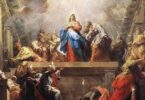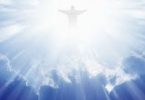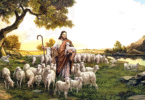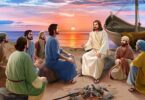Christmas Mass of the day (Year – C)
Scriptures: Is. 52:7-10; Ps. 97(98):1-6; Heb. 1:1-6; Jn. 1:1-18
There has been growing concern about creation. The Catholic Church has also become increasingly aware of the present situation, which demands urgent attention to the care of creation. Pope Francis has opened the doors of the Catholic Church to practically address this awareness. On 18th June 2015, he published his landmark encyclical Laudato Si’, clearly articulating the Church’s teaching on creation. The implications of these teachings have invited the Catholic Church to observe Creation Day. In 2015, Pope Francis embraced the Orthodox Christian tradition of celebrating the World Day of Prayer for Creation on 1st September. The World Council of Churches has also incorporated the practice of celebrating an entire season dedicated to creation, beginning on 1st September and culminating on 4th October, the Feast of St. Francis of Assisi, the patron saint of ecology.
Unlike the Orthodox Church, the Catholic Church did not historically have a tradition of celebrating a dedicated Creation Day. Orthodox Christians celebrate 1st September as the very day of creation, symbolising the phrase “in the beginning”. Although they once used a different system of calculating time, after adopting the universal calendar system, they remained faithful to their age-old tradition. In 1989, Ecumenical Patriarch Dimitrios expanded this celebration into a day of prayer for creation within the Orthodox Church.
The creation account is recorded in the first two chapters of the Book of Genesis. The Church affirms certain truths about this account, such as God being the Creator and creation being ordered out of chaos. The entire creation was orderly and declared good. Humanity was the pinnacle of this creation. There is an interesting correlation between the first creation account and the birth of Jesus. In both accounts, God acts out of His free will: in the first, through the action of creation, and in the second, through the action of salvation. In the first account, God’s Word brought all things into being, while in the second account, the Word became flesh in Christ. Additionally, in the first creation, God created physical lights, while in the second, Jesus became the Light of the World. Lastly, the Holy Spirit hovered over the waters in the first account, while in the second, the Spirit conceived Jesus in Mary’s womb.
It is no surprise that the Catholic Church views the birth of Jesus as the new creation of the world. The Church Fathers have long asserted this idea. Among them, St. Athanasius of Alexandria and St. Irenaeus of Lyons are prominent. St. Athanasius (+373), in his work On the Incarnation, described the birth of Christ as the moment when God entered creation to restore and renew it. He further stated that God redeemed humanity through the Incarnation and brought forth a new creation. St. Irenaeus of Lyons (+130) spoke of Christ as the new Adam who inaugurates a new creation, undoing the damage caused by the first Adam. Later, Pope Benedict XVI, in his book Jesus of Nazareth, reflected on the Incarnation as the renewal of all creation, noting that the birth of Christ inaugurates a new beginning.
A careful reading of the Word of God in today’s liturgy reveals the same message. All three readings carry a common thread, delivering the core message that the birth of Jesus is the new beginning of creation.
The first reading, from the Book of the Prophet Isaiah, is a poetic expression belonging to the era of the Second Isaiah, who lived during the Babylonian exile. The prophet sees the rise of King Cyrus of Persia as a sign of hope. He proclaims a message of hope, peace, and redemption. The prophecy resonates with the key message that God will bring order to chaos. God braces His arms to act against the enemies, dispelling the darkness of fear and slavery. The watchmen working through the night will now see God face to face, signaling a new beginning.
In the second reading, the author of Hebrews affirms that in Jesus, we have God’s final and fullest revelation. God has spoken definitively through His Son. The author identifies the birth of Jesus as the new creation, referencing the first creation story. God made everything in the world through Jesus, the eternal Word, who is also the radiant light of God’s glory. This passage serves as an introduction to the letter, revealing the true identity of Jesus Christ who is superior to angels.
The Gospel text conveys the same message. The introduction of St. John’s Gospel offers profound insights. St. John highlights Jesus as the Word present at the time of creation. Through Him, God created everything. John then introduces Jesus as the light shining in the darkness, and he mentions St. John the Baptist as a witness to this light, who testifies to Christ.
If we accept the birth of Jesus as the new beginning, then we must believe that we are once again in the Garden of Eden, the lost paradise. Now, we can see God and speak to Him face to face. Unlike the first creation story, where humanity was forbidden to eat from the tree of knowledge, we are now invited to partake of the fruit of the Cross—Jesus’ Body and Blood in the Eucharist. However, we must avoid repeating the mistake of Adam and Eve: breaking our relationship with God by disobeying His commandments.
May this Christmas celebration remind us that Jesus has restored us as heirs of paradise. Let us live in harmony with creation, in unity with one another, and in a deep relationship with God, as we embrace the new creation inaugurated by Christ. May every Eucharist remind us of this beautiful message.






